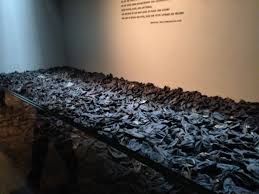by Bob Sparrow

Southern Utah is the United States’ only area that offers five National Parks – Zion, Bryce, Arches, Canyonlands and Capitol Reef, and thus has the highest concentration of natural scenic wonders found anywhere on Earth! Which, of course, made it much more difficult for me to find my golf ball when, for whatever reason, it ended up outside the boundaries of the golf course I was playing. Along with Lake Powell and the Colorado River as water hazards, I’m glad I brought plenty of balls on this trip. This area also boasts four State Parks, two National Monuments, plus Monument Valley, famous for its iconic mesas and buttes often featured in Western movies . . . as well as providing scenic hiding places for my golf balls.

Yes, my travels last week took me first to the city of St. George, in southern Utah, to play golf at The Ledges, Coral Canyon, and Copper Rock, but let’s not talk about my golf game when southern Utah has so much more to offer than my ‘Aww shits’ and “Can you hand me another ball?”. This home of the Mormons, who make up about 70% of the cities’ population, is a most unique and beautiful place. The first Latter-day Saints (LDS/Mormon) temple, built west of the Mississippi, was not built in Salt Lake City, but in St. George in 1877.
The city of St. George was founded in 1861, notwithstanding the fact that for some thousands of years before that, the area was inhabited by the Ute, Goshutes, Paiutes, Shoshone, and Navajo Indians. But the city was founded as part of the Mormon ‘Cotton Mission’ under Brigham Young, which aimed to establish in Utah, a cotton-growing region in the face of the Civil War, as northerners believed that they would no longer be getting cotton from the South. Even though cotton growing proved to be an unsuccessful venture, this area became known as Dixie. It remained being called that until 2021, when the ‘woke folk’ decided that the name was racist.

There is controversy about how St. George got its name, but I’m going with the story that it was named after George Smith, first cousin to Joseph Smith, founder of the LDS movement. George settled in the area and encouraged residents to eat raw, unpeeled potatoes in order to cure scurvy – it sort of worked, as potatoes do contain some Vitamin C, but the cure probably came from the oranges they ate after they ate the potatoes to get that raw potato taste out of their mouths. Either way, it earned George the name, ‘Potato Saint, thus Saint George. George may not have been a real saint, but he was a real Mormon who had seven wives and 20 children. Of course, polygamy is not legal today, but it is said that you don’t have to be Mormon to have one too many wives.

My golf game gave me plenty of opportunities to explore the flora and fauna of the surrounding area, and it is, indeed, beautiful; not my golf game, but all the places I looked for my golf ball.
The rest of this week will be spent losing golf balls in an area where I’m more familiar with losing things . . . Las Vegas.
“Fore!!!!!”



